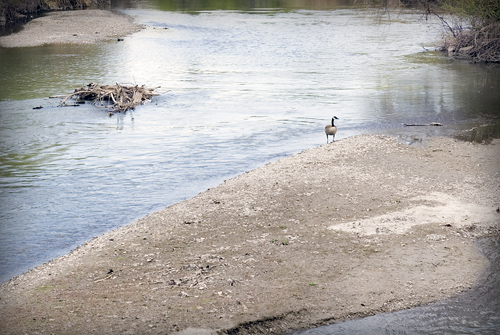
The Jordan River is a 51-mile long river that flows north from Utah Lake to Great Salt Lake, dropping 289 feet over that distance. Pumps at the north end of Utah Lake regulate flow in the river. All Salt Lake Valley streams empty into the Jordan, and the river collects whatever fluid and detritus is left in the streams and conveys it to our inland sea.
We've used the river to float logs and granite blocks on barges north to the Central Pacific Railroad and Temple Square. Named by Heber C. Kimball, who likened it to Israel's Jordan River, since it flows from "a fresh water lake through fertile valleys to a dead sea," the river reflects the mistakes of our past and our hopes for the future.
In the not too distant past, valley residents treated the river with wanton neglect, using it to move the refuse generated by our lives, including sewage and chemical discharges, out of sight and mind and into Great Salt Lake. It was the focus of environmental legislation in the 1970s and there are two Superfund sites adjacent to its banks. Even now, its water is classified as "impaired" by the Utah Division of Water Quality.
But there's a bright future for the river: the Jordan River Parkway. Municipalities next to the river have pledged to clean it up and turn it into a jeweled thread weaving its way through our urban lives, with boating facilities, trails, educational centers and easy public access. Envision Utah's 2008 Blueprint Jordan River foresees regional river centers for housing and retail development. A river that once was treated poorly looms as an asset coveted by both public and business interests in the 21st century.

